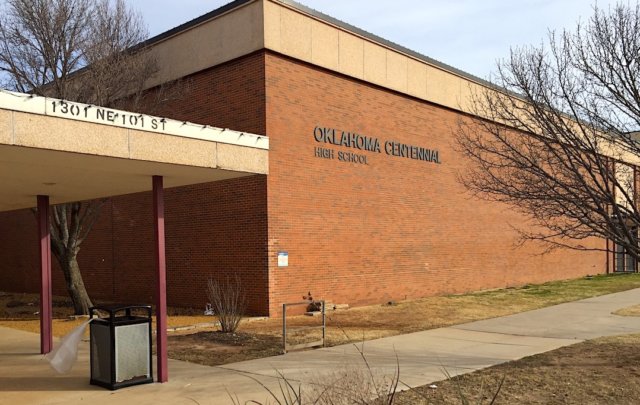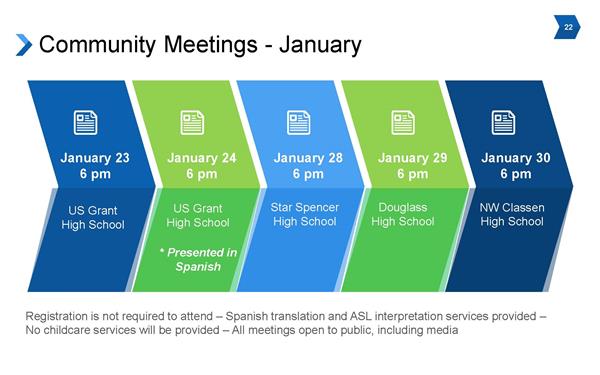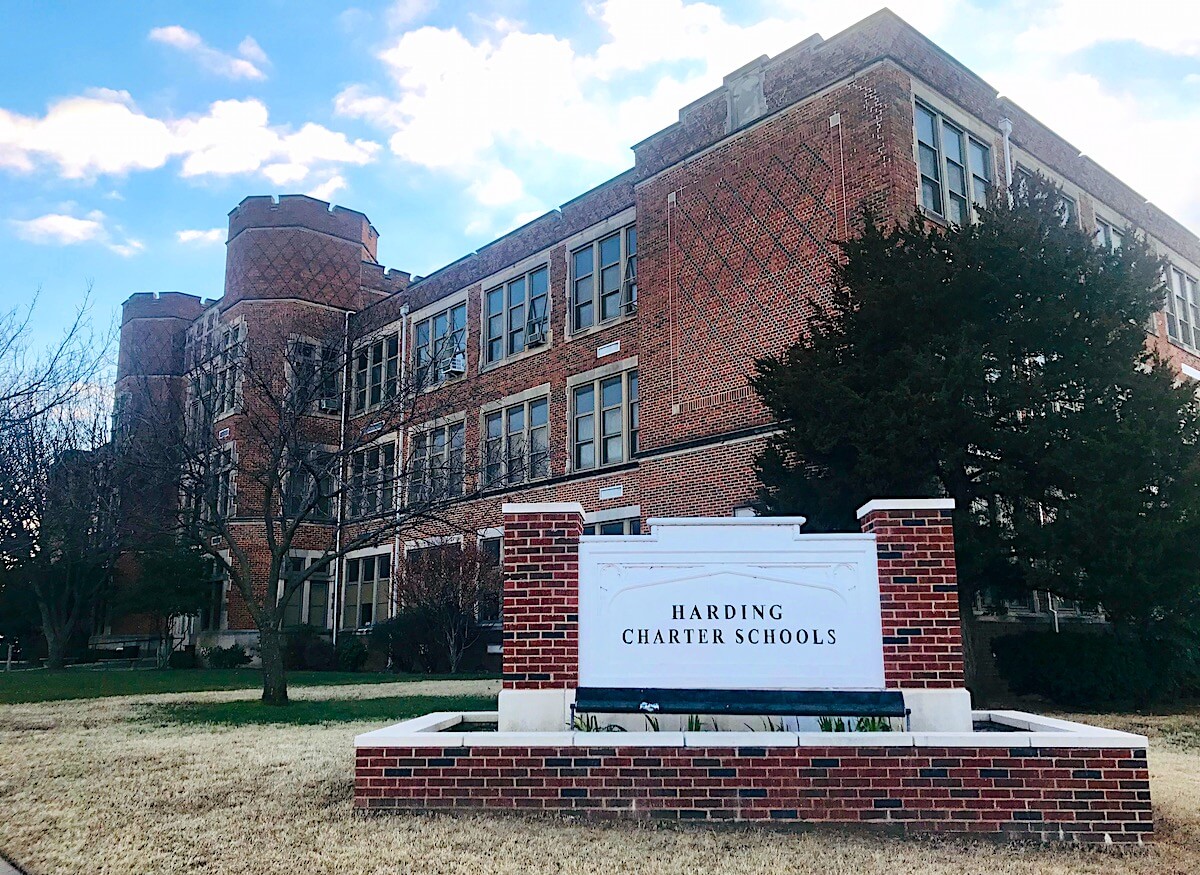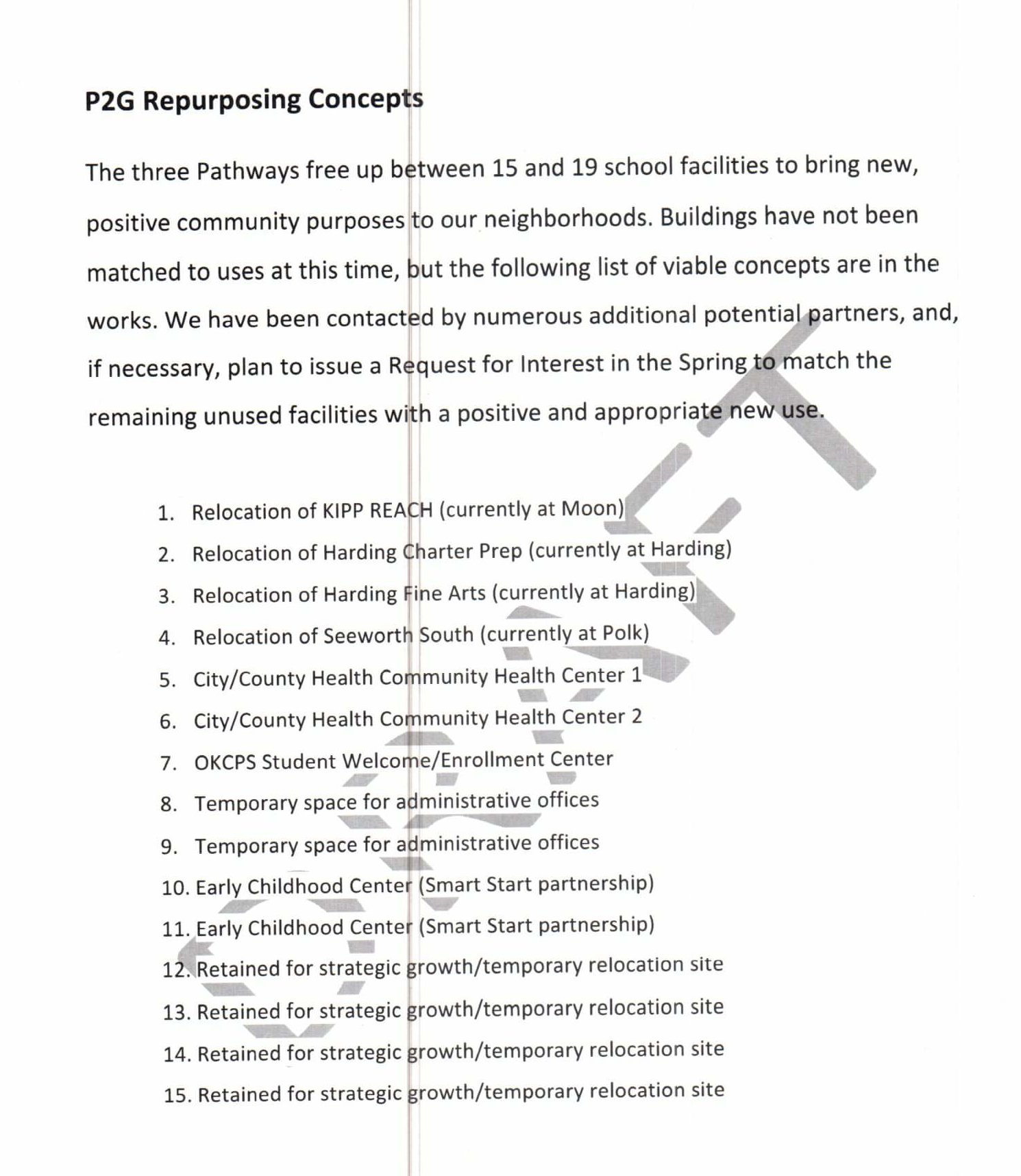
At Tuesday’s 5:30 p.m. district board meeting, Oklahoma City Public Schools Superintendent Sean McDaniel is scheduled to present three variations of a plan to close at least 14 schools and realign the sprawling district’s feeder tracts.
Documents obtained by NonDoc reveal details of the three OKCPS realignment paths, each of which would eliminate current middle school and high school building cohabitation while moving most 5th grade classes from elementary schools into middle schools.
Oklahoma Centennial High School and Oklahoma Centennial Middle School (1301 N.E. 101st St.) are the only non-elementary schools proposed for closure under all three paths.
Those “paths” have been developed as part of the district’s Pathway to Greatness project, which intends to implement a series of “trade ups” to improve resources available at OKCPS schools. Friday, McDaniel told Tim Willert of The Oklahoman that between 14 and 20 schools would be slated for closure.
Documents and conversations with a dozen local education stakeholders indicate that 12 of the schools included in all three paths are neighborhood elementary schools. One pathway proposes the closure of five other elementary schools.
While McDaniel said Monday he preferred not to comment on specific school proposals until his full presentation Tuesday evening — set for livestream on the district’s YouTube channel — he emphasized that the tough changes being considered should yield more robust resources at OKCPS elementary schools.
“Through this process, every single elementary will have at least three teachers at every grade level,” McDaniel said, adding that about 40 percent of the district’s 54 elementaries currently have only a single teacher leading a grade level. “So not only [might I be] a first-year teacher, but I’m emergency certified. So who do I collaborate with in that building?”
Under the Pathway to Greatness plans, the district would retain about 30 elementary schools, which would see dramatic improvements in resources deemed important by community members, McDaniel said.
For instance, all remaining elementary schools would have a full-time art teacher, music teacher and physical education teacher, something only 33 percent of OKCPS elementary schools have currently. All elementaries would also have counselors, full-time librarians and dedicated STEM spaces. Only two elementary schools currently have dedicated STEM space.
“The status quo is not acceptable. We believe we can do better by our kids, by our families,” McDaniel said. “The way we are delivering now is good for some, but it’s not good for most. (…) This is tough work. There is a lot of fear.”
Follow @NonDocMedia on:
Mann: District seeks ‘equitable opportunity for every kid’
NonDoc obtained multiple undated variations of a spreadsheet detailing the three paths likely to be presented at Tuesday’s board meeting. Visuals of those spreadsheets do not appear in this story after conversations with McDaniel and others indicated that terminology and details about specific schools are still being adjusted prior to the district’s formal announcement.
But the general details of the reform pathways appear clear. Other than the Centennial schools that have struggled at an isolated campus built in 2007, Rogers Middle School is the only non-elementary school facing potential closure, and that option exists under only one of the three pathways. Two of the three pathways could move some current Rogers students into Star Spencer High School.
With middle schools proposed for removal from Douglass, John Marshall and Northeast Academy, up to seven current elementary schools could become middle schools, predominantly serving 5th through 8th grade students.
The shifting of 5th grade classrooms from elementary to middle schools could surprise parents of current 4th graders, but McDaniel said more context will be provided at Tuesday’s board work session at Northeast Academy, 3100 N. Kelley Ave.
Multiple people with knowledge of the OKCPS realignment paths confirmed that the Northeast campus would remain an academic institution under all three proposals.
OKCPS board member Mark Mann emphasized equity as a key goal of the district’s project.
“I’ve committed that I’m not going to comment other than to say we have to deliver education differently in OKCPS because what we have been doing for the last 30 years does not provide equitable opportunity for every kid. And we have to get that right,” Mann said Sunday. “No matter what school you go to in Oklahoma City, you have to have access to the same opportunities that every other kid does. And it’s on us to figure out how to make that happen.”
After Tuesday, the district’s “timeline” for selecting a pathway includes five community meetings between Jan. 23 and Jan. 30, followed by a “final path recommendation” during the Feb. 19 OKCPS board meeting. The board would potentially vote on that path recommendation March 4.

Charter schools would ‘relocate’

According to documents and stakeholders, all three Pathway to Greatness plans would likely “relocate” Harding Charter Preparatory High School and Harding Fine Arts High School, a pair of high-performing charter schools that share a building (3333 N. Shartel Ave.) leased from the district.
A post on the Harding Charter Preparatory High School Facebook page would seem to confirm that part of the proposals. The post references communication with “OKCPS officials” and calls the Harding building’s proposed closure “unexpected.”
“We are in direct communication with OKCPS to assess possible options, both short- and long-term,” HCP principal Steven Stefanick wrote in the post. “We will be extensively reviewing all information and will be working closely with the district to find the best options for relocation.”
Asked Sunday about his communications with OKCPS officials, Stefanick said his school’s board is exploring options either to stay at the current location or to relocate.
“We anticipate negotiations beginning in February,” he said.
ADG, an architecture firm hired to advise the district on its school properties, identified the current Harding building to be in need of substantial repairs, multiple people with knowledge of the situation said on the condition of anonymity.
Those people also confirmed documents showing that KIPP Charter School — currently co-located at F.D. Moon Elementary School — would relocate under all three paths. Seeworth Academy charter school would relocate as well.
The relocation of those four charter schools are listed atop 15 potential building “repurposing concepts” detailed on another document:

Background on OKCPS realignment paths
OKCPS is Oklahoma’s largest school district, with more than 45,000 students enrolled in the 2017-2018 school year according to state data. The number marks a continued uptick in enrollment for the district in recent years, though the student population remains far lower than what OKCPS served in the 1950s and 1960s.
Previously the superintendent of Mustang Public Schools, McDaniel was named OKCPS superintendent in May.
On Dec. 21, OKCPS released its “final criteria data” for the Pathway to Greatness project:





















